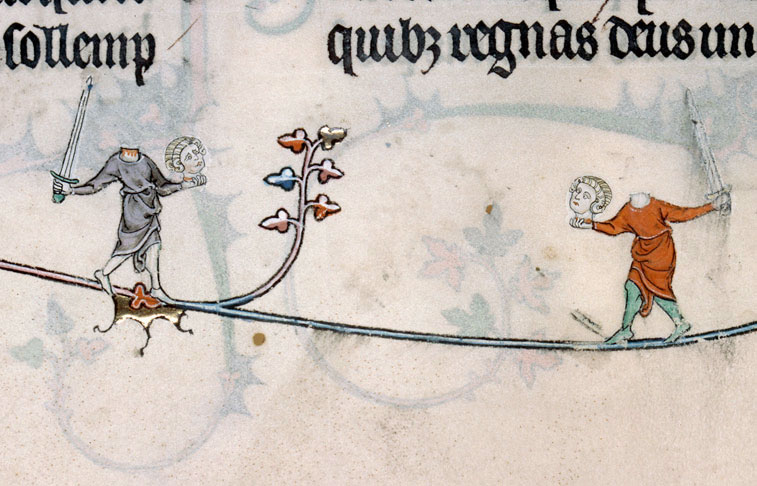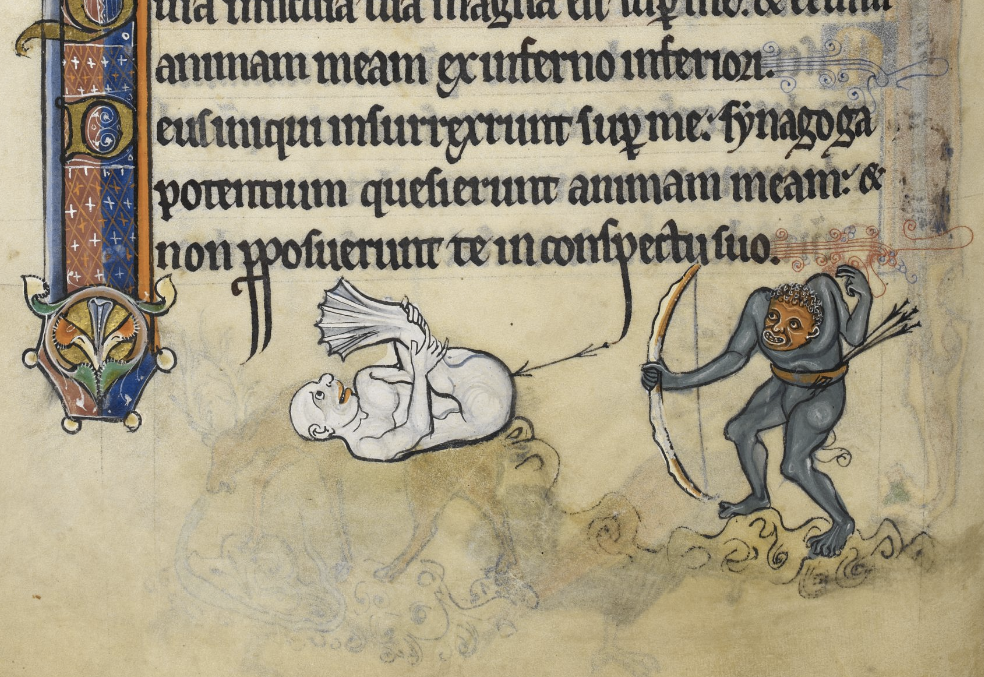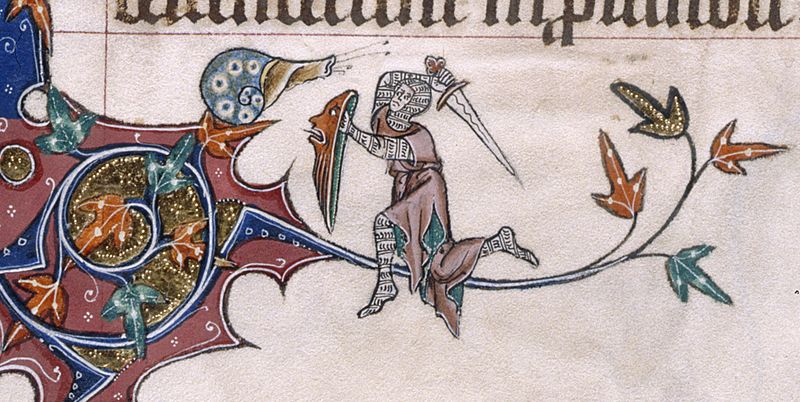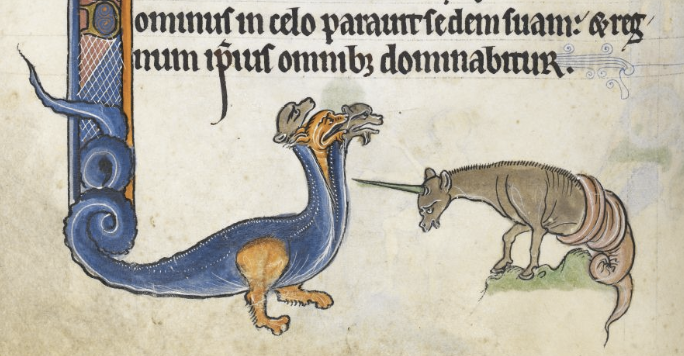Music Examples
Here are some of the songs featured in Adelina the Jester
Procession is from the very start of the show. It will give you an idea of the sound world you are entering with this oratorio.
Round and Round is a rousing choral piece at the start of Act 1 - The villagers sing about their lives and about their town. This is a computer rendering featuring a virtual choir with no actual words being sung, but you can read the words below.
Adelina's Lament is an aria for Mezzo-Soprano and Chorus towards the end of Act 1, Scene 1 - Adelina sings about how she is looked down upon by her fellow villagers and is blamed for everything that goes wrong. This is a computer rendering featuring a virtual Mezzo-Soprano and Chorus. There are no actual words being sung, but you can read the words below and use your imagination!
My Land featuring mezzo-soprano Bethany Ammon, is an aria from Act 1, Scene 5. Bethany, as Adelina, sings about losing her family's land when the Normans invaded Britain in 1066, and she wants it back in exchange for her help in saving Roger de Montgomery from the wrath of King William II. Roger is one of King William's right hand men, and the land's new owner.
- Procession
- Round and Round
- Adelina's Lament
- My Land
Your web browser does not support HTML5 audio. Please update to a newer web browser.
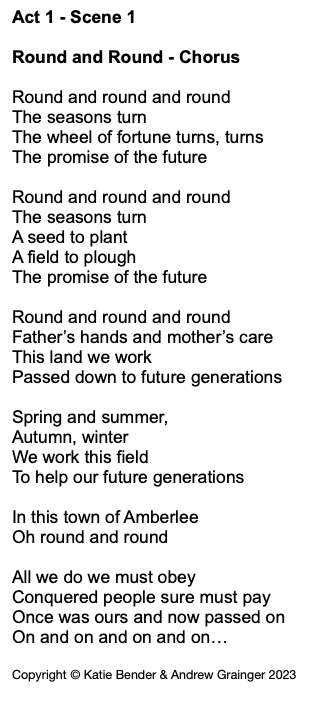
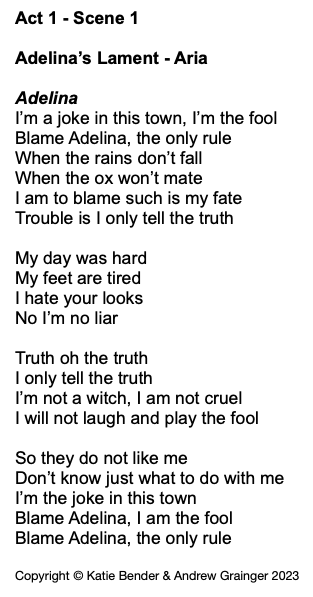

The Instruments of Adelina the Jester
This section details the instruments that will be used in this production.
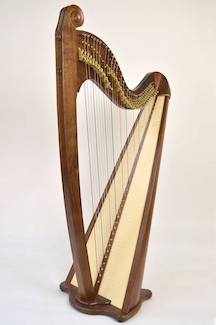
Harp
Ancient depictions of harps were recorded in Mesopotamia, Persia, and Egypt, and later in India and China. By medieval times harps had spread across Europe and then continued to spread to the Americas and beyond. We are using a lever harp which is different from a modern concert harp, but it provides some additional harmonic flexibility and a beautiful sound to boot. The harp is the primary accompanying instrument for Adelina the Jester
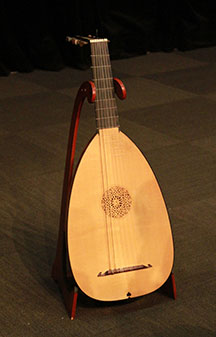
Lute
The lute was pre-eminent in a family of plucked-string instruments, which included the mandoline-like citole and gittern as well as the long-necked saracen or Moorish guitar. The lute itself was introduced into Europe by the Moors when they invaded Spain in the 8th century, and its popularity received a boost when the Crusades began to increase Arabic contact c. ll00. It's a familiar instrument having been featured in so many paintings over the centuries, and for Adelina the Jester it provides an authentic medieval accompanying partner to the Harp.
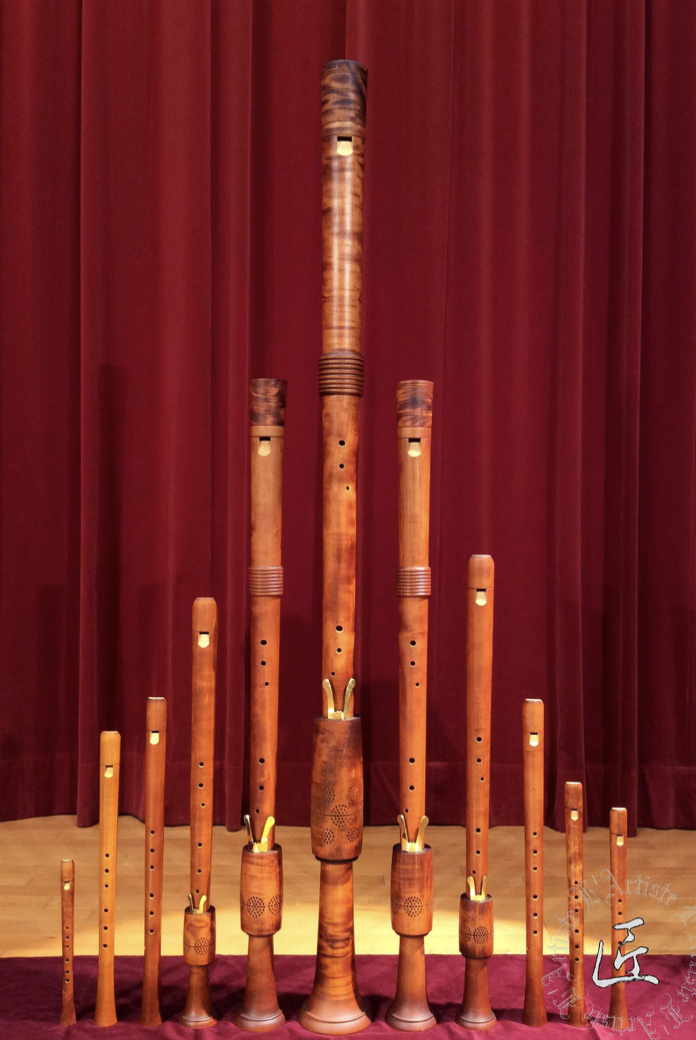
Recorder
The vertical flute has a particularly ancient history and includes the Japanese shakuhachi, the quena, seen in South American folk music and folklore, and a variety of primitive instruments that have been found all around the world.
The recorder, which has become the most widely popular of all end-blown flutes, came into being in Europe during the Middle Ages.

Baroque Guitar
Not strictly a medieval instrument, but the quality is wonderful and it adds a little more variety to the sound palette. Tuned exactly the same as a modern guitar but without a bottom E-string.
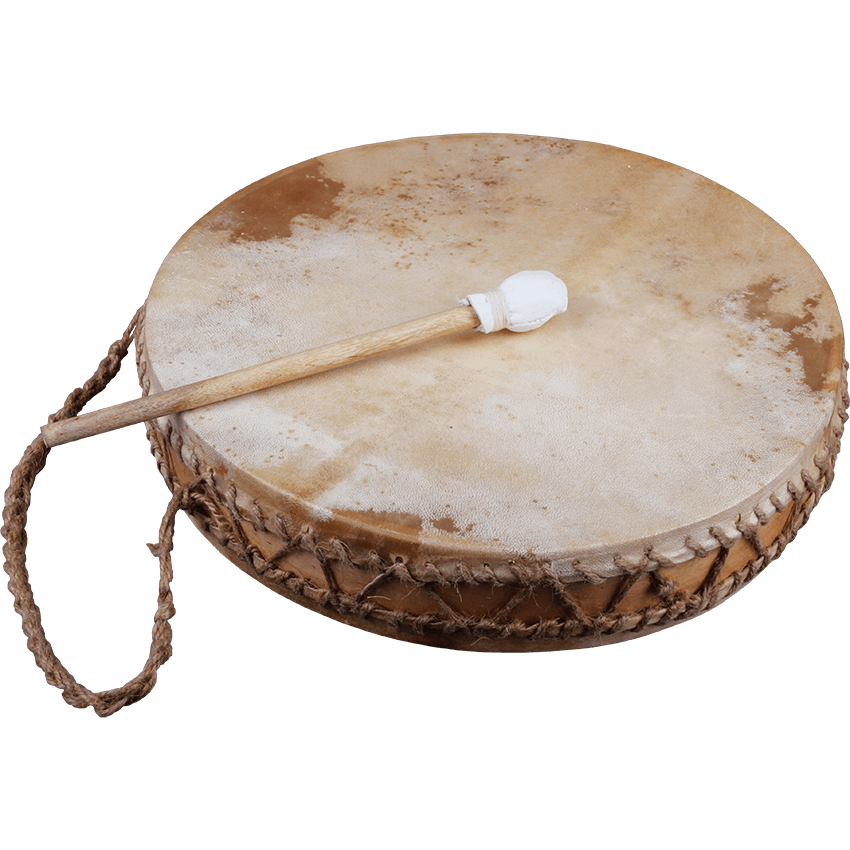
Frame Drum
One of the most ancient of all musical instruments, the Frame Drum is essential for providing rhythmic punctuation and excitement. We will also have some lower pitched drums, tambourine and shakers.
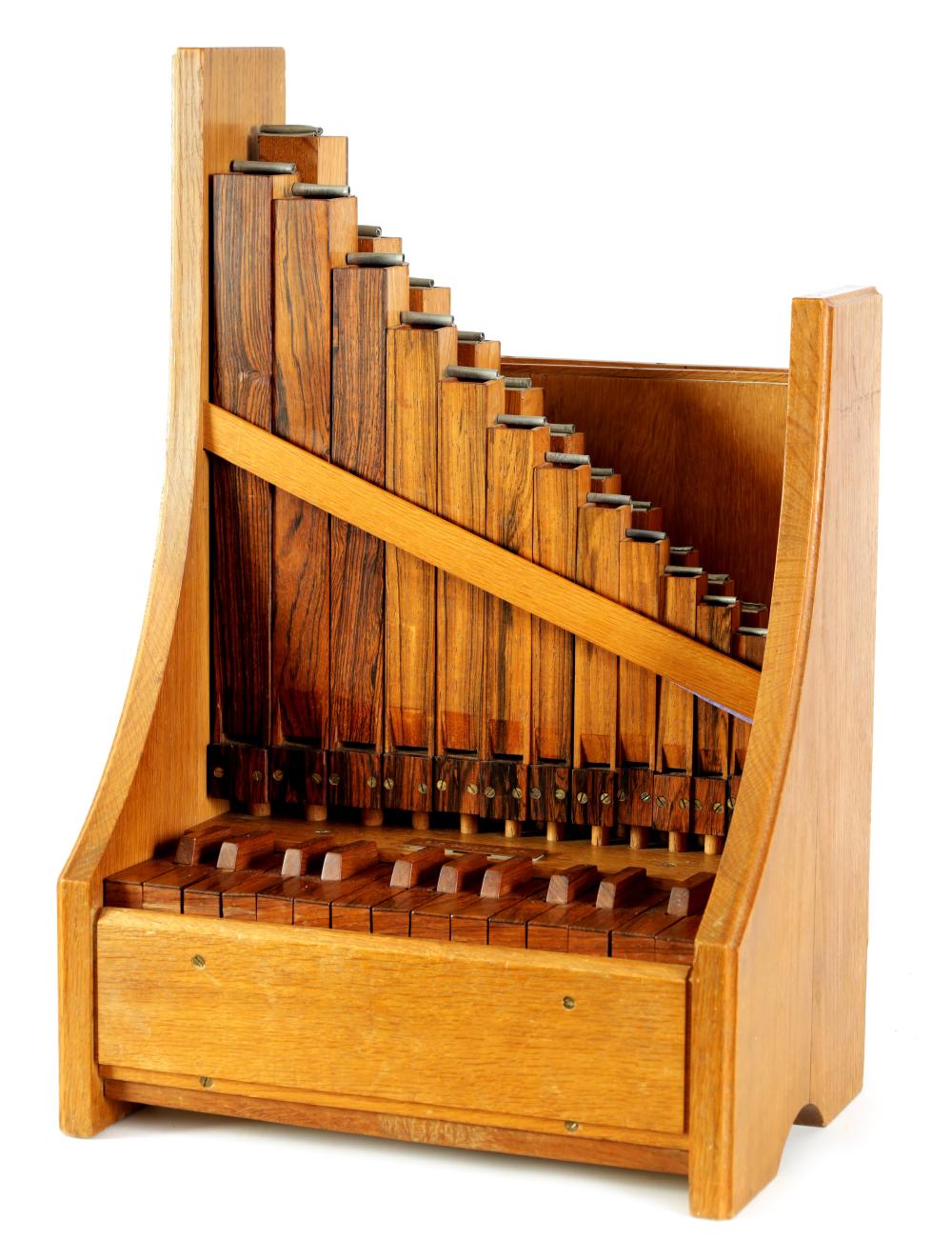
Portative Organ
We will be using something that sounds similar to this kind of early organ, and this adds a sustaining element to the overall soundscape.
Some fun Medieval Marginalia
Evidence that people of the Middle Ages had a sense of humor! See here for more details
Hover mouse over image to pause. Hover outside image to resume slideshow. For mobile devices you can swipe and pause.
Made in Austin, Texas

